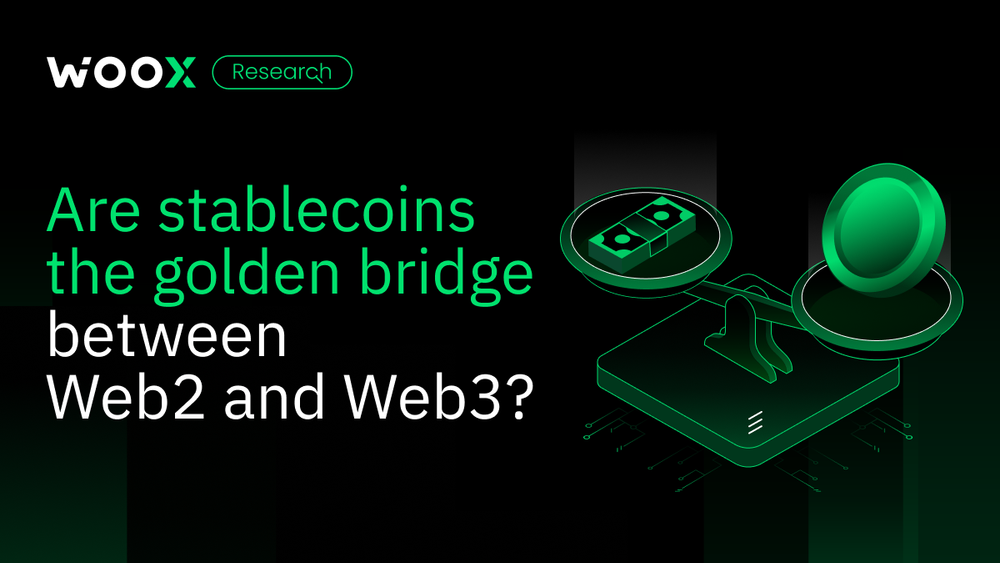Are stablecoins the golden bridge between Web2 and Web3?
Early this month, major cryptocurrencies like Bitcoin and Ethereum saw significant declines, with Bitcoin (BTC) plummeting by 16% and Ethereum (ETH) by 21%—two of the most stable assets in the crypto space by market cap.
Amid this volatility, leading market makers like Jump Trading and Wintermute were notably found to be holding most of their assets in stablecoins, designed specifically to offer stability in an otherwise unpredictable market.
Unlike typical cryptocurrencies, stablecoins are engineered to maintain a consistent value, often pegged to a stable asset like the US dollar or gold. This gives them the unique ability to offer both the security of fiat currency and the benefits of decentralized networks.
Ref: https://defillama.com/stablecoins
While Web2 deposits are confined to closed networks like domestic payment systems and SWIFT—operating under centralized control—stablecoins are recorded on public blockchains. This decentralization not only enhances their resilience and long-term viability but also positions them as a focal point for coordination among global market participants.
With the stability of traditional fiat and the openness of Web3, stablecoins serve as a crucial bridge for those looking to enter the Web3 space, while also providing a haven during periods of market turbulence. For instance, in October 2022, Dominica took a pioneering step by officially recognizing TRC-20 USDT as a national digital currency
Classifications of stablecoins
Stablecoins can be broadly categorized into centralized and decentralized types, both of which began emerging in 2014. The first centralized stablecoin was Tether (USDT), created by core members of Bitfinex in the Cayman Islands. USDT has since become the most widely used stablecoin, boasting the largest market capitalization.
As of now, there are over 50 centralized stablecoins in circulation, including prominent ones like USDT, USDC (Circle), FDUSD (First Digital), PYUSD (PayPal), TUSD (TrueUSD), USDY (Ondo), BUSD (Binance), and GUSD (Gemini).
Decentralized stablecoins, on the other hand, operate without central control, typically maintaining a 1:1 peg to the US dollar. The earliest decentralized stablecoin was BitUSD, launched by BitShares in 2014. However, BitUSD eventually lost its peg and declined after four years. Another significantly decentralized stablecoin, UST from Terra/Luna, became notorious for collapsing in a death spiral during the last bull market, causing significant disruption in the market.
Collateral-based classification
Stablecoins can also be classified based on the type of collateral backing them:
1. Fiat-Collateralized Stablecoins: These are backed by fiat currency reserves, such as the US dollar. Examples include USDT and USDC.
2. Crypto-Collateralized Stablecoins: These stablecoins are backed by cryptocurrencies, often requiring over-collateralization to account for the volatility of the underlying assets. DAI, backed by Ethereum, is a notable example.
Ref: https://www.theblock.co/data/stablecoins/non-fiat-pegged
3. Commodity-Collateralized Stablecoins: These are backed by tangible assets like gold or other commodities. Paxos Gold (PAXG) is an example of a stablecoin backed by gold.
4. Algorithmic Stablecoins: These maintain their peg without traditional collateral, instead relying on algorithms and economic incentives. Algorithmic stablecoins can be further divided into:
Rebase Stablecoins: These adjust the supply based on the price. For instance, Ampleforth (AMPL) increases its supply when its price exceeds $1 and decreases it when the price falls below $1.
Seigniorage Stablecoins: These utilize a dual-token system, such as Terra's UST and LUNA, where one token is burned to mint the other, with arbitrage mechanisms designed to maintain the peg.
Fractional Stablecoins: These combine algorithmic and collateralized approaches, with a collateral ratio usually at or below 100%. This allows for more efficient use of collateral. Frax (FRAX) is a prominent example, where supply adjustments are made based on price fluctuations.
Benefits of stablecoins
Stablecoins serve as a critical bridge between the traditional financial systems of Web2 and the decentralized world of Web3, offering lower costs and higher efficiency compared to legacy cross-border payment networks like SWIFT.
In regions with fragmented financial systems and significant international ties, such as Africa, stablecoins like USDT and Binance's P2P services have gained widespread use. For instance, TRON-based USDT has become dominant in markets across South America, Africa, and Turkey, highlighting its importance in facilitating efficient cross-border transactions.
The introduction of compliant stablecoins by major companies, such as PayPal's PYUSD and JD.com's Hong Kong dollar-pegged stablecoin, further underscores the growing market demand for stablecoins in global payments.
In developing countries facing inflation and currency depreciation, stablecoins provide a valuable hedge against these economic challenges, aligning with the vision of cryptocurrencies as a countermeasure to central bank policies. In the crypto ecosystem, stablecoins are essential to the functioning of decentralized finance (DeFi) by offering a stable medium of exchange, reducing the need to convert back to fiat currencies. Their stability, compared to volatile cryptocurrencies like BTC and ETH, makes them particularly attractive.
Additionally, decentralized stablecoins offer the advantage of censorship resistance, while those on public blockchains benefit from the transparency and security inherent in blockchain technology, recording transactions on immutable ledgers that enhance trust and reduce the risk of fraud.
Challenges facing stablecoins
History has told us, stablecoins can be unstable.
The collapse of Silicon Valley Bank in March 2023 led to a loss of confidence in USDC, causing its price to briefly plummet to $0.878. This event had a ripple effect, impacting other stablecoins like DAI, FRAX, and MIM. The LUNA collapse also had a lasting impact, taking two years to recover.
Technically, stablecoins face the "Stablecoin Trilemma", which highlights the difficulty in simultaneously achieving decentralization, capital efficiency, and price stability.
Ref: https://academy.swissborg.com/en/learn/stablecoins-and-their-risks
Decentralized stablecoins, like DAI, prioritize decentralization and price stability but often require over-collateralization, leading to capital inefficiencies. Centralized stablecoins like USDT and USDC are more capital efficient and maintain stability through fiat backing, but they sacrifice decentralization, exposing them to central control and regulatory risks.
Algorithmic stablecoins attempt to balance these factors through automated mechanisms, yet they often struggle with price stability, particularly during market volatility, as demonstrated by the collapse of Terra's UST. This trilemma underscores the inherent trade-offs and risks involved in stablecoin design.
Stablecoins are also subject to significant regulatory uncertainty and market risks. Regulatory actions can influence their issuance, usage, and legality, potentially leading to disruptions in their adoption and wider use. Additionally, stablecoins may be vulnerable to market manipulation or face challenges related to insufficient liquidity.
Closing thoughts
Ref: https://coinmarketcap.com/view/stablecoin/
With a market capitalization exceeding $172 billion and daily trading volumes around $89 billion, stablecoins have firmly established themselves as integral to the crypto ecosystem. As cryptocurrencies strive for mainstream acceptance, stablecoins—pegged to familiar fiat currencies—act as accessible gateways, facilitating broader participation in decentralized finance.
While challenges like regulatory uncertainties and technological vulnerabilities persist, the future of stablecoins holds promise as they continue to evolve, providing stability and fostering trust in the rapidly changing world of digital finance.
Disclaimer
The development and market cap of stablecoins mentioned in the above content is speculative and based on market analysis at the time of writing and should not be interpreted as guaranteed outcomes. Market conditions can fluctuate widely and unpredictably due to numerous factors such as regulatory changes, market demand, and global economic developments.
The information provided in this article is for general informational purposes only and does not constitute financial, investment, legal, or professional advice of any kind. While we have made every effort to ensure that the information contained herein is accurate and up-to-date, we make no guarantees as to its completeness or accuracy. The content is based on information available at the time of writing and may be subject to change.
Please note that this article includes references to third-party websites and data, which are provided solely for convenience and informational purposes. We do not endorse or assume any responsibility for the content, accuracy, or reliability of any information, products, or services offered by third parties.
Cryptocurrencies involve significant risk and are NOT suitable for the majority of investors. The value of digital currencies can be extremely volatile, and you should carefully consider your investment objectives, level of experience, and risk appetite before participating in any staking or investment activities.
We strongly recommend that you seek independent advice from a qualified professional before making any investment or financial decisions related to cryptocurrencies. We shall in NO case be liable for any loss or damage arising directly or indirectly from the use of or reliance on the information contained in this article.


